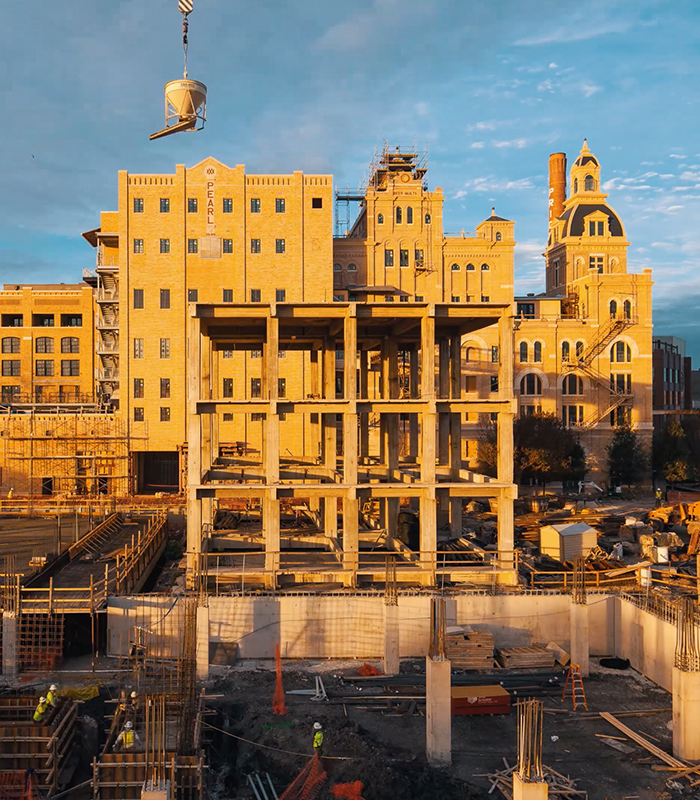Doing Time | Hotel Emma History Timelapse Video
The stunning timelapse video at left — capturing Hotel Emma’s historic transformation — was created by Scott Martin, a Texas artist perhaps best known for his otherworldly nighttime photographs of stark and strange desert environments. He may have developed the patience to make the hours-long desert exposures right here at Hotel Emma and the Pearl. For four years during renovation, Scott roamed the construction site, setting up eight cameras to capture over 400,000 still images of an abandoned brewery complex becoming a dynamic destination and neighborhood.
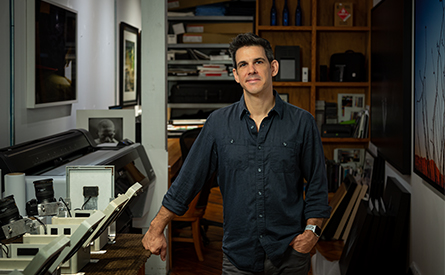
As Pearl’s visual documentarian, what do you aim to achieve?
To create a visual language for describing this place.
When did you first begin shooting Hotel Emma?
I explored the site in 2002 and 2003 before renovations began, but didn’t start making images till 2007. I was making images just for myself, playing around with long exposures and light painting.
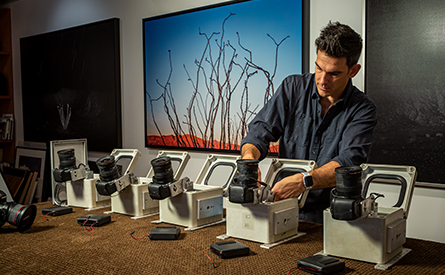
How does your non-Pearl work influence your Pearl projects?
I’ve always been an artist who works with photography instead of a commercial photographer for hire. The images I made at Pearl in those early days were for myself. After a while, the Pearl team noticed the work and asked me to continue it on a more official basis. The creative freedom was fantastic. This all started as “non-Pearl” work and then evolved seamlessly into what I’m doing today.
Does your knowledge of Hotel Emma’s history influence how you approach shooting there?
I’m the son of an architect, an avid home brewer and a historic preservation geek, so everything about the Brewhouse hit on all cylinders for me. The riveted metal tanks, the pink mortar and masonry, and the original gravity-fed brewing design really resonated with me. I wanted to honor the work of the original planners and craftsmen who built the place.
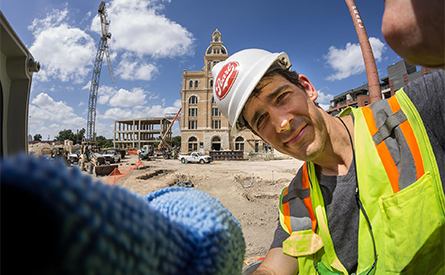
What do you like best about shooting Hotel Emma?
Lots of things… The camaraderie with the construction workers and planners. The site was so unusual that we had to figure out a lot of things as we went. Everyone watched out for each other — strangers helping strangers. The morale was high, along with a feeling that we were all involved with making something of significance. For the most part, that job site was incredibly quiet and serene at night. It was a peaceful, dark, electricity-free pocket within a bustling city. It was a dream-like place to work at night all by myself. There were times were I worked constantly for 2-4 days straight without leaving the site. I would scout by day and shoot all night, taking short naps during long exposures. Tripod, camera bag and kitchen bag. That seems to be the process wherever I go.
When I started this work there was no Hotel Emma or even a concept of what the building might become. It’s fun to look at some of those early photos now and compare them to the places that they have become. I didn’t realize at the time that I was taking photos of what would later be the Emma Koehler and Maritzen suites, library and lobby. So those before and after photos in the same places show the drama of Hotel Emma’s transformation.
What’s your favorite Hotel Emma “discovery?”
All of the cellars buildings were refrigerated at lagering temperature (34°F – 45°F) for their entire lifespan. The buildings were lined with 6 to 12 inches of cork insulation and the cellarmen wore wool suits while working. Ammonia was used as the refrigerant and its flow was controlled from a single manifold you can see today in the lobby at the Sternwirth entrance. Every time I see that ammonia manifold I think about those guys in wool suits.
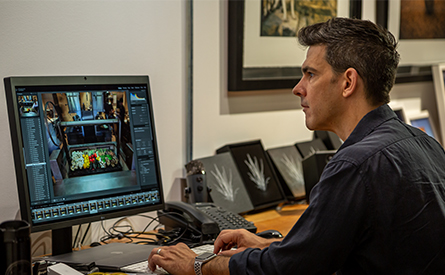
How old were you when you decided to be a photographer?
I asked for a camera when I was 5 years old and would wander the neighborhood hunting for photos, trying to be smart about using those 12 frames wisely. My interest in photography as art has grown steadily since then. The hunt for the image and experimentation with process remains a big draw.
What photographers and/or artists have influenced you?
While photographers like Michael Kenna and Dan Winters have been influential, I’m looking to artists like Josef Albers and Chris Sauter moving forward. San Antonio’s contemporary art scene has been hugely influential for me and I think it’s important for photographers to look outside of photography for inspiration.
How do you relax? What do you do for fun?
I get myself to a desert and soak it in.
What about you might surprise us?
I brew and keg sparkling mineral waters with amazing minerality. I think it might be the answer to everything.


